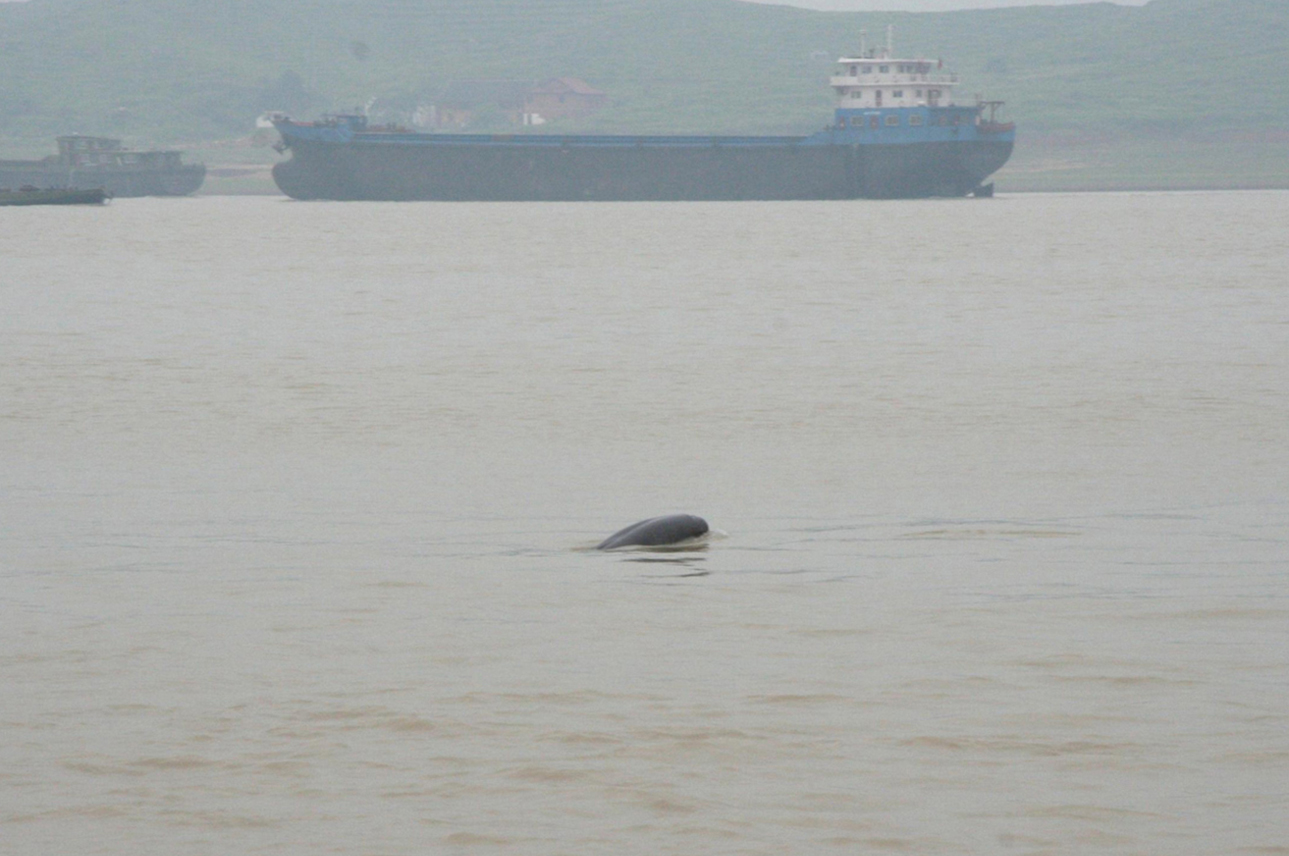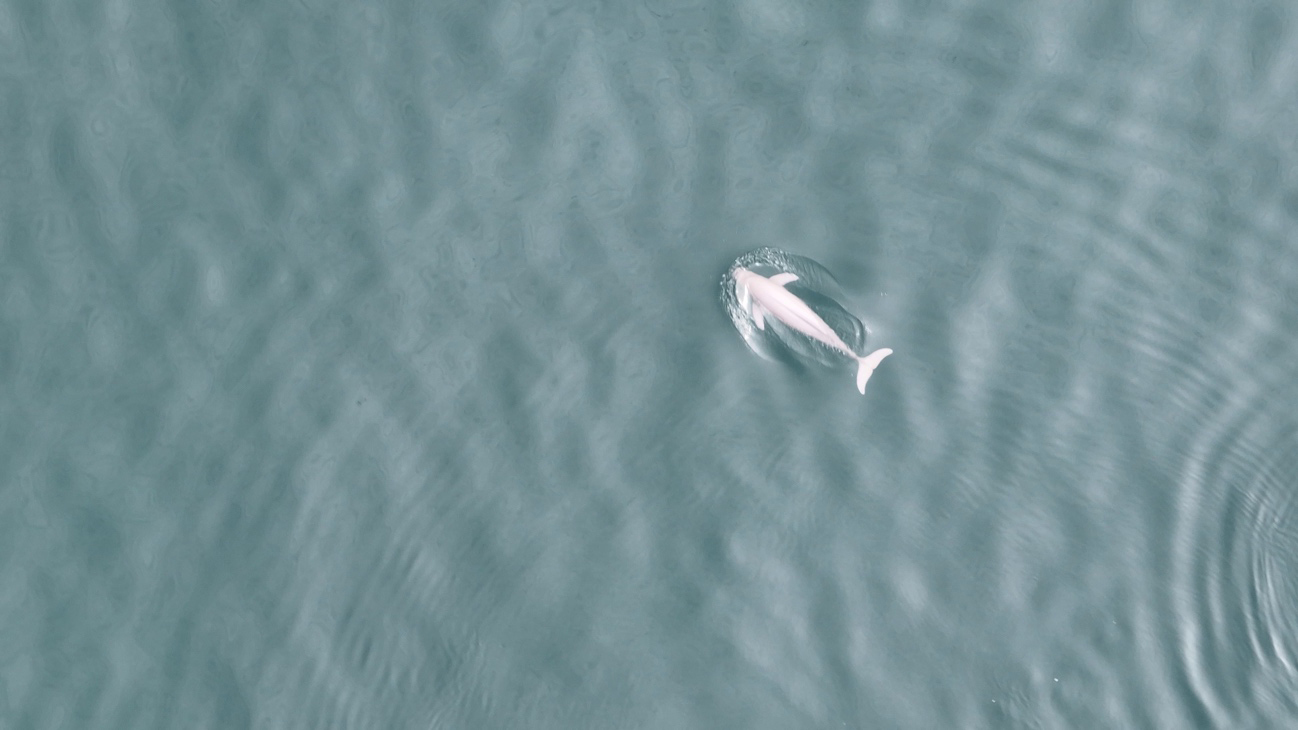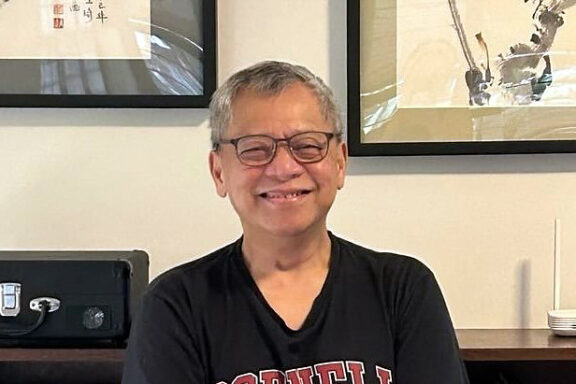Interview with Satoko S. Kimura

Short Bio
Satoko S. Kimura is an Associate Professor at the Center for Southeast Asian Studies, Kyoto University. She is also a member of the Kyoto University Department of Bioresource Science (Faculty of Agriculture), the Division of Applied Bioscience (Graduate School of Agriculture), and the Wildlife Research Center. She received her PhD (Informatics, 2021), MS (Informatics, 2009), and BS (Agricultural Science, 2007) from Kyoto University and has been in her current position since 2022.
Her research focus is elucidating the behavior and ecology of large aquatic organisms such as dolphins using a combination of passive acoustic observation, biologging, drones, and other research methods. She has conducted field research in various countries, including China, Malaysia, Thailand, India, Denmark, Mexico, and Japan.
Much of the ecology of dolphins and other large aquatic creatures, including when, where, and how they live, remains shrouded in mystery. Although ever popular in aquariums and zoos and often depicted anthropomorphically in picture books and stories, some species have quietly become extinct or are now endangered. We interviewed Associate Professor Satoko S. Kimura, who is trying to unravel the mysteries of living creatures through the power of sound, to find out how we can learn more about these familiar, and yet still enigmatic, species.
──Please tell us about your research.
I study the behavior, ecology, and bioacoustics of dolphins and other small marine mammals. I am also involved in research on other species such as chondrichthyes (sharks and rays), eels and other fish, and pinnipeds (seals and sea lions). Most of my research focuses on the habitats of the target animals, such as oceans and rivers, but I sometimes work with aquariums and other breeding facilities to conduct research on captive animals.
The behavior and ecology of organisms living in aquatic environments are still shrouded in mystery. I use a variety of methods to unravel these mysteries. These include passive acoustic monitoring using underwater microphones to detect sounds made by organisms; biologging using tags attached to animals to obtain behavioral data; and, in recent years, I have started to use drones to observe behavior from the air.
My primary research goal is to elucidate basic ecology, but I also develop research and analytical methods as needed. I also assess the impact of noise from coastal shipping and offshore wind power mills on organisms and the environment1 as well as the stress experienced by animals in aquariums and other breeding facilities.2
The emerging interdisciplinary field of bioacoustics may be unfamiliar to many people in Japan (or perhaps everywhere in the world). Underwater organisms produce a variety of sounds that are closely related to their behavior and ecology. Traditionally, the primary method for studying marine mammals has been to use visual observation. Recently, however, it has become clear that it is more efficient to confirm the presence of animals by capturing the sounds they produce. This is especially true for rare species. I started using acoustic monitoring because I was studying the finless porpoise, which is particularly difficult to find even among small marine mammals. Finless porpoises, which live in the coastal waters of Asia, are very difficult to see due to their small size, lack of dorsal fin, and small group size. Early in my research career, I compared the rates of detecting finless porpoise using visual observation and acoustic monitoring and found that the acoustic method was more than twice as effective. In recent years, researchers have also succeeded in identifying specific sounds emitted by animals before catching prey and when communicating with their mates. In other words, we are now able not only to detect animal presence acoustically, but also to monitor specific behaviors.
Based on recent progress in research and the growing demand for assessments, it is evident that there is still much that can and must be done in the field of underwater bioacoustics. However, the number of researchers in this field is not increasing, perhaps because it is an interdisciplinary field that merges biology, physics, and informatics.


──How did you get started in research and how did you come to your current research?
I did not originally aspire to become a researcher; rather, it was the result of a series of decisions at various junctures that put me on this path. I discuss these in detail in a 2021 interview.3 I have sometimes wondered whether I should take pride in becoming a researcher in such a way. Still, ever since hearing Nobel Prize winner Dr. Yamanaka use the phrase “人間万事塞翁が馬 [fortune is unpredictable]” in one of his lectures, I have felt a little more confident. After all, I have always loved the Spanish expression que será, será, which means “whatever will be, will be.”
──Can you share with us an episode about any influential people, things, and places you have encountered whilst doing your research?
I have conducted research in various countries and regions, including China, the US, Mexico, Thailand, Denmark, India, Malaysia, and Japan. I have enjoyed being exposed not only to the human cultures of each country, but also their research cultures and the different animal cultures.
If I had to say what has been the most impressive of all, I would have to say China. My research career began with a study of Yangtze finless porpoises in China. I also believe that the extinction of the Yangtze River dolphin, or Baiji, in China remains the source of my motivation to continue research even today. Coincidentally, when I first traveled to China for research in 2006, researchers from around the world were conducting a large-scale survey of the Baiji. After surveying 1,700 km of the river, not a single Baiji was found. The extinction of the species was announced the following year. I never had an opportunity to encounter one. At the time, the population of Yangtze finless porpoises in the Yangtze River was declining dramatically, following the trajectory of the Baiji’s extinction.
In addition to the biological research, people and events or accidents in China also left an impression on me more than in any other country.
My research often takes me out on a river or ocean by boat or ship. After being on board for hours or even days, I usually become friends with the captain and his wife, if she is on board, no matter what country we are in. During my research in China, the captain’s wife cooked lunch for us, which we ate on board. Eventually, she began to teach me how to cook and give me recommendations for seasonings. As we got to know each other better, she gradually began to treat me like a daughter. In winter, there were times when she would not easily let me do my research, saying, “It’s so cold. You should stay inside the cabin. Don’t worry about it. It’s fine.” I also became friends with their dog. On one occasion, I came across their dog being attacked by another dog on the road. When I chased away the other dog, their dog must have thought I was safe and followed me straight to the hotel and even came into my room. The hotel staff just laughed and said nothing, which also surprised me.
There were many other incidents. One time, the research boat broke down in the middle of the river. We had to be rescued by one of the captain’s friends, who towed us back to shore with a rope. On another occasion, someone we didn’t know came aboard the research boat in the middle of the survey, and, for some reason, we dropped him off somewhere before we headed home. As we were conducting research in a very remote area, I began to worry about the living conditions, so I started bringing light bulbs from Japan to deal with the power outages. When funerals were held for important villagers, they would set off firecrackers all over the village starting early in the morning. I eventually got so used to it that even if I was awoken by the noise, I could get under the covers and go back to sleep without much concern. There were so many unusual episodes in China that I cannot recall them all. Since I traveled there more than 20 times and spent time on each visit, I became friends with Chinese researchers as well as support staff of the research institute and their families. I still remember being told, “We are the ‘friendship bridge’ between China and Japan!”


──Please share with us some of the challenges and creative efforts that have come from conducting field research.
One of the most difficult aspects is that the course of the research is often dictated by the weather. Also, because the research involves wild animals, I often arrive at research sites only to discover that there are no animals or that they have gone somewhere else.
I would think that conducting drone surveys or research in aquariums, both of which do not require researchers to be on a boat or ship, would eliminate some of these challenges. But that has not been the case at all. Drones, as long as they are flying, can obtain data from a bird’s eye view, but they are very vulnerable to wind and rain. In the case of aquariums, it is sometimes not possible to obtain data depending on the animals’ mood or the chemistry between the animals and the staff. The staff are usually very apologetic and are often surprised when I tell them, “Compared to field surveys, this is nothing at all. I’m used to not getting the data I want.” I have always been impatient and quick-tempered, but since I started field research, I think I have learned a few things about flexibility, patience, and not thinking too much about things that I cannot control.
Also, the adverse effects of UV exposure from field work have been much greater than I expected. During field work, I put on several layers of strong sunscreen, wear sunglasses, and cover my head and face with a hat or cloth, but I have developed numerous spots on my face. I try to see them positively, as medals of honor for being a field worker, but sometimes I wish I could get rid of them with laser surgery. But then I hesitate because I realize that no matter what I do, they will just come back again after the next field work. I also began to develop cataracts in my thirties. It seems that exposure to significant amounts of UV light causes cataracts to develop earlier. When the doctor asked if I played sports or did other activities outside, my answer was, “Well, I do research aboard ships near the equator and other places… .” You must watch out for UV rays.


──How do you overcome the difficulties in putting together the results of your research into a research paper or book?
I did not used to have much problem putting together a paper, but during the 5 to 6 years between my first pregnancy and when I finally finished breast feeding, I was absent-minded, and my mind was muddled. During that time, I accumulated way too much data for papers. I am presently struggling with sorting out the mix of old data and ongoing data that I am acquiring. My hope is that I will be able to accelerate writing and publishing in the future.
When it comes to writing books or materials in Japanese rather than academic articles, I am bothered by how my writing speed fluctuates because I sometimes have no idea what to write. I inevitably end up spending more time making tea, looking out the window, and cleaning the room.
──Do you have any essential reads (books) that you can recommend to younger people?
I have created a personal page on the Kawaijuku-no Mirai Bukku [Kawaijuku Books for the Future] website, where I have posted several book recommendations.4
When I conduct research with Kyoto University students, I often feel that they have a high level of basic Japanese language and writing skills. However, these skills are not acquired overnight. I recommend reading. I once had the opportunity to answer questions from high school and university undergraduates at a seminar held by the Japanese Bio-logging Study Group to which I belong. At the seminar, a professor from the University of Tokyo gave advice on developing a reading habit.5
──Do you have any words of advice to anyone who wants to become a researcher?
To be honest, I think the road to becoming a researcher is a rocky one. It may be even more difficult in the field of wildlife science because the subject matter—dolphins, for example—is not obviously connected to industry. Getting a PhD is just a starting point. Even if you are able to secure a temporary post-doc position, obtaining a permanent post after that seems to not just depend on your ability, but also on some unknown force such as luck or fate. The salary may not be that much compared to the average annual salary of other graduates from the same university. But in exchange, you have the right to conduct research as you please. This right is priceless.6
A drone survey in progress

──What are your future ambitions as a scholar?
When I looked up the word “ambition,” it said, “a desire to achieve something that pushes beyond the boundaries of what is expected or considered achievable.” If we are talking “beyond the boundaries,” I would like to do more and more interesting research. It is difficult to explain what I mean by “interesting research,” but I think it would be to discover aspects of animal behavior and ecology that no one has considered before, to understand the significance of these behaviors and ecology, or to identify the “laws” that are common to living things. Nothing would make me happier than if my research makes children say, “Animals are amazing! They’re so interesting!” I also hope that I can contribute in some way to a better future not only for humans, but also for wild animals and, by extension, the Earth.
(February 2, 2024)
Notes
- See, for example, the following article: Ogawa, M., Kimura, S.S. Variations in echolocation click characteristics of finless porpoise in response to day/night and absence/presence of vessel noise. PLoS ONE 18(8), e0288513 (2023) . https://doi.org/10.1371/journal.pone.0288513 ↩︎
- See, for example, the following article: Hori, M., Kimura, S.S., Mizutani, Y. et al. Detection of telomere length and oxidative stress in Chondrichthyes. Fisheries Science 88, 741–750 (2022). https://doi.org/10.1007/s12562-022-01633-x ↩︎
- See the Kyoto University Gender Equality Promotion Center interview page (Japanese): https://www.cwr.kyoto-u.ac.jp/story/researcher/mystory1_5/ ↩︎
- See the following website (Japanese): https://miraibook.jp/researcher/ss23089 ↩︎
- For more information, see the following webpage (Japanese): https://japan-biologgingsci.org/home/qa%E3%82%B3%E3%83%BC%E3%83%8A%E3%83%BC/ ↩︎
- For more on the pleasure and difficulties of research, see the previous interview (Japanese): CSEAS Roundtable, https://www-archive.cseas.kyoto-u.ac.jp/newsletter/jp/06/06_roundtable.html ↩︎
This article is also available in Japanese. >>
「音から生物の謎に挑む:小さなケセラセラを積み重ねて」
木村里子准教授インタビュー







